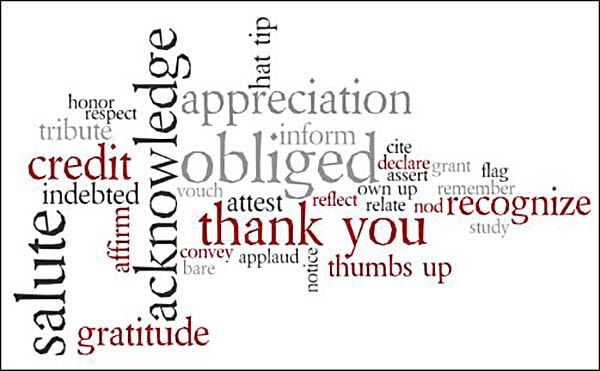At first glance, the news landscape doesn’t look encouraging. We sift through an endless stream of instant news updates. Yet, rather than enlighten us, the technology overloads and overwhelms us. Before we can finish digesting the latest developments, the news industry moves on to the next “big story” that may or may not demand our attention.
How can we have faith in the news industry to set the agenda for public discourse?
Rather than changing the news industry, we need to look into the mirror and change ourselves. We have to ask ourselves hard questions. Here are a few to consider.
- Am I getting the information I need?
- Which areas of coverage are really the most important to me?
- Given my lifestyle and what I need to know, are my news-consuming habits effective?
- Do I differentiate between news and the interpretation of it?
- Which news services are most reliable for the different areas of coverage important to me?
- Do I learn something new each day, or am I just getting incremental updates?
Although the examples in this book relate to Israel, the principles behind the eight categories of bias apply to all areas of coverage. Hopefully, a greater awareness of the eight categories of media bias will contribute to a higher level of public “news literacy.” (You can learn more about the growing news literacy movement at the Poynter Institute, The News Literacy Project, and Stony Brook University’s Center for News Literacy, for starters.)
But change begins with ourselves.

Acknowledgements
Putting together this Red Lines series was a humbling experience. No matter how much you know (or think you know), you just can’t do it on your own. I owe a debt of gratitude to the following people for making it happen.
Joe Hyams, HonestReporting’s CEO, for the nudges that kept this project moving along, even on days when there were a million-and-one reasons to relegate the e-book to the “One of Those Things We’ll Get Around to Doing” file.
HR’s board of directors, especially President of the Board David Barish, for the stewardship, vision, and support, and for appreciating this e-book’s place in HonestReporting’s mission.
HR’s managing editor Simon Plosker, board member Gavin Gross, and another journalist (who for personal reasons asked not to be named) for taking the time to review earlier drafts (no small feat!) and kindly sharing their feedback and very constructive criticisms.
Yarden Frankl, Daniel Pomerantz, Molly Livingstone and Daniel Remer for all the work that went into the accompanying videos: wrapping their heads around the concepts, arranging and doing the interviews, editing the footage and adding the extra spit and polish to make it all shine.

I want to acknowledge several editors I’ve had the pleasure of working with. Former HonestReporting editor Shraga Simmons inspired the analysis of media bias in definable, objective categories. Shraga’s successor, Michael Weinstein, helped me adjust my writing style for the Web 2.0.
Gary Rosenblatt, former editor of The Baltimore Jewish Times gave me my break into journalism and continues to embody the dignity of the profession at The New York Jewish Week. Since taking on a part-time copy-editing job at The Times of Israel, I’ve been fortunate to count founding editor David Horovitz as a role model. I also want to acknowledge my friends from the editorial staff of The Retriever, the student paper of the University of Maryland-Baltimore County, where, together, we learned our craft on the fly.
I never had the pleasure of working with former Jerusalem Post executive editor David Bar-Ilan, but his “Eye on the Media” columns in the early 1990s were my eye-opening introduction to media watchdogging.
Bill Kovach and Tom Rosenstiel’s two books The Elements of Journalism and Blur: How to Know What’s True in the Age of Information Overload are must-reads for anyone to wants to be an informed news consumer. My understanding of media transparency was especially influenced by their works. (If you buy the books through AmazonSmile, Amazon will donate 0.5% of the price of your eligible AmazonSmile purchases to HonestReporting.)
A big thank you to HonestReporting’s former graphic artist, Jeremy Zauder, for taking my caterpillar of a draft and turning it into a beautiful butterfly of an e-book that this online series is visually based on. We all know what butterflies, e-books and web pages are supposed to look like, but when the caterpillar draft was my baby, it was reassuring that Jeremy and I were on the same page. My gratitude to our current graphic artist, Bentzi Binder for last-minute image work that seamlessly worked with Jeremy’s original look.
Last but not least, I want to thank my parents, Michael and Nancy Benson for encouraging me to pursue my curiosity for news; my wife, Miriam, for putting up with a husband constantly following the news cycle; and my kids, Rivka and Shlomo, for exhibiting the same inquisitiveness about what’s happening in the world and asking the same questions I did when I was their age.
Click to learn more about each individual category.
The 8 Violations of Media Objectivity
- Misleading definitions: Prejudicing readers through language.
- Imbalanced reporting: Distorting news through disproportionate coverage.
- Opinions disguised as news: Inappropriately injecting opinion or interpretation into coverage.
- Lack of context: Withholding a frame of reference for readers.
- Selective omission: Reporting certain events over others, or withholding key details.
- Using true facts to draw false conclusions: Infecting news with flawed logic.
- Distortion of facts: Getting the facts wrong.
- Lack of transparency: Failing to be open and accountable to readers.
See also the introduction to this series.
“Red Lines: The Eight Categories of Media Bias,” is available on Amazon for purchase as an e-book.
Before you comment on this article, please remind yourself of our Comments Policy. Any comments deemed to be in breach of the policy will be removed at the editor’s discretion.

